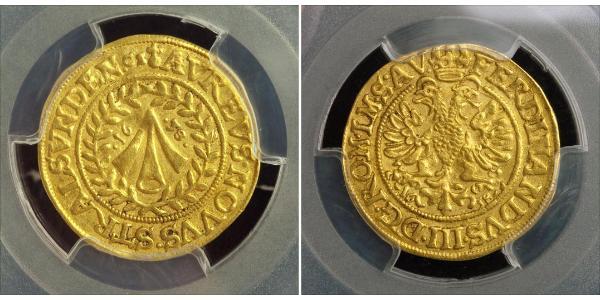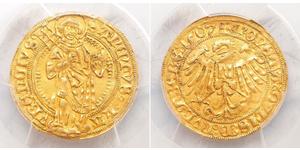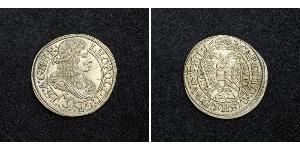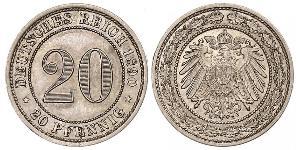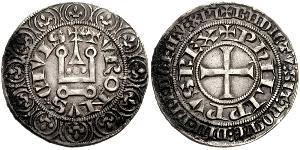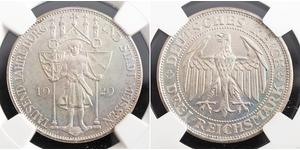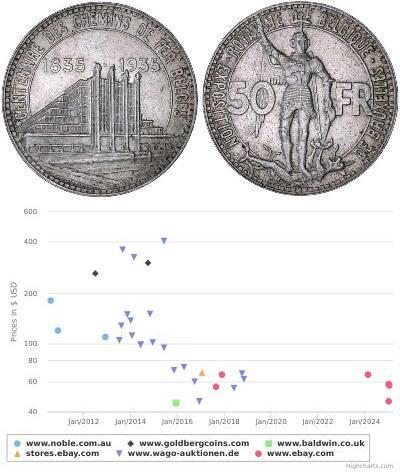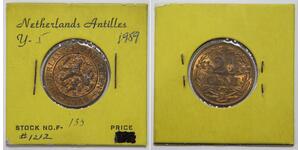1638, German States, Stralsund. Beautiful & Rare Gold Ducat Coin. PCGS AU-55! Mint Year: 1638 Denomination: Ducat Mint Place: Stralsund (City) Mint Master: Casper Sievers (CS) State: Stralsund (under Swedish occupation) Condition: Certified and graded by PCGS as VF-35! Reference: Friedberg 3368, KM-102 ($2900 in XF!) Weight: 3.45gm Material: Gold! Obverse: Arms of Stralsund, splitting date (.16.-.38.) all within wreath. Legend: + AVREVS . NOVVS . STRALSVNDEN . CS Reverse: Crown splitting legend above double-headed imperial eagle. Date (.16.-38.) split in fieds below. Comment: The city fell during 1637 under Swedish occupation, but obviously was allowed to keep its coinage unchanged, citing the Emperor as its ruler! Legend: FERDINANDVS . III . D . G . ROM . IM . S . AV . For your consideration a beautiful and rare german states gold ducat coin, struck by the hanseatic city of Stralsund, which had the right to strike its own coins since the 13th century (1325). Shortly before this coin was struck the city was sacked by the Swedish army under Christina of Sweden, but was obviously allowed to continue its regular coin design type, which cites Ferdinand III as its ruler. The simplest and most probably reason was, that it might have caused iritation by the city`s trade partners which were probably located in imperial controlled areas. A desirable double dated gold issue and great additioin! Stralsund (German pronunciation: [ˈʃtʁaːlzʊnt]), is a Hanseatic city in Mecklenburg-Vorpommern, Germany. It is located at the Southern coast of the Strelasund (a sound of the Baltic Sea separating the island of Rugia from the mainland). The Strelasund Crossing with its two bridges and several ferry services connect Stralsund with Rugia. The Western Pomeranian city is the capital of the Vorpommern-Rügen district since the 2011 district reforms. It is the fourth largest city of Mecklenburg-Vorpommern, and together with Greifswald Stralsund forms an Oberzentrum, one of four high level urban centers of the region. It is favourably located within the metropolitan regions of Hamburg, Berlin, Copenhagen-Malmö and Stettin and the nearby regiopolis of Rostock. Stralsund was founded in 1234 and was one of the most prospering members of the medieval Hanseatic League. Since 2002, Stralsund's old town with its rich heritage is honoured as a UNESCO World Heritage, along with Wismar in Mecklenburg. The main industries of Stralsund are shipyards, fishing, mechanical engineering, and, to an increasing degree, tourism, life sciences, services and high tech industries, especially IT (Information Technology) and biotechnology. In the Middle Ages, the Stralsund area was part of the West Slavic Principality of Rügen. At that time, the Dänholm isle and fishing village, both at the site of the latter town, were named Strale / Stralow, Polabian for "arrow" (this meaning is still preserved in the town's coat of arms, showing an arrow). The full Polabian name is Strzałów. The village also had a ferry to the island of Rugia. In 1168, the Principality of Rügen became a part of Kingdom of Denmark. In the course of German Ostsiedlung, many German settlers, gentry and merchants were called into the principality, and eventually populated the Strale settlement. Merchants from other countries as well as locals were attracted to the area and made up for one third of the town's population. The Danish navy used the isle as well. When the settlement had grown to town size, prince Wizlaw I of Rügen granted Lübeck law to "our town Stralow" in 1234, although a significant settlement had existed long before the formal founding. In 1240, when the prince gave additional land to the town, he called it Stralesund. The success of the settlement challenged the powerful Free City of Lübeck, which burnt Stralsund down in 1249. Afterwards the town was rebuilt with a massive town wall having 11 town gates and 30 watchtowers. The Neustadt, a town-like suburb, was merged to Stralsund by 1361. Schadegard, a twin town to Stralsund also founded by Wizlaw I nearby, but was not granted German law, served as the principal stronghold and enclosed a fort. It was given up and torn down by 1269 under the pressure of the Stralsund Bürger. In 1293 Stralsund became a member of the Hanseatic League. A total of 300 ships flying the flag of Stralsund cruised the Baltic Sea in the 14th century. In 1325, the Principality of Rügen became part of the Duchy of Pomerania, Stralsund however maintained a considerable independence. In the 17th century, Stralsund became a theatre in the Thirty Years' War. In the Battle of Stralsund (1628), the town was besieged by Albrecht von Wallenstein after the council refused to accept the Capitulation of Franzburg. Stralsund resisted with Danish and Swedish support. The Swedish garrison in Stralsund was the first on German soil in history. With the Treaty of Stettin (1630), the town became one of two major Swedish forts in the Duchy of Pomerania, besides Stettin (now Szczecin). After the war, the Peace of Westphalia (1648) and the Treaty of Stettin (1653) made Stralsund part of Swedish Pomerania. Lost to Brandenburg in the Battle of Stralsund (1678), it was restored to Sweden in the Treaty of Saint-Germain-en-Laye (1679). In the Great Northern War in 1715 Charles XII led the defence of Stralsund for a year against the united European armies. Stralsund remained under Swedish control until the Battle of Stralsund (1807), when it was seized by Napoleon Bonaparte's army. Seized by Ferdinand von Schill's freikorps in 1809, it was subsequently re-gained by France, with Schill killed in action. In the Congress of Vienna (1815), Stralsund became a part of the Prussian Province of Pomerania and the seat of a government region resembling the former Swedish Pomerania. From 1949 until German Reunification in 1990, Stralsund was part of the German Democratic Republic. Only 1$ shipping for each additional coin purchased!
читати далі

|
Добавив:
anonymous 2015-06-23 |
Similar Coin Groups
2025-05-24
- Історичні ціни на монету
2025-06-16
- Нова монета додана до 2 1/2 Цент Нідерланди
2 1/2 Цент Нідерланди
в групі 18 монет / 14 цін
⇑
NETHERLANDS ANTILLES 2 1/2 CENTS CROWNED DUTCH LION W/ SWORD WORLD COIN
Можливо, Вас зацікавить...

